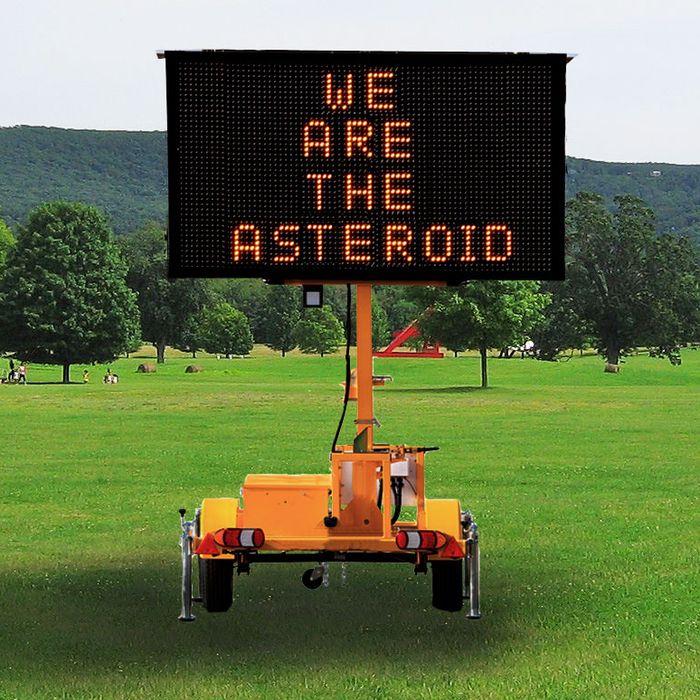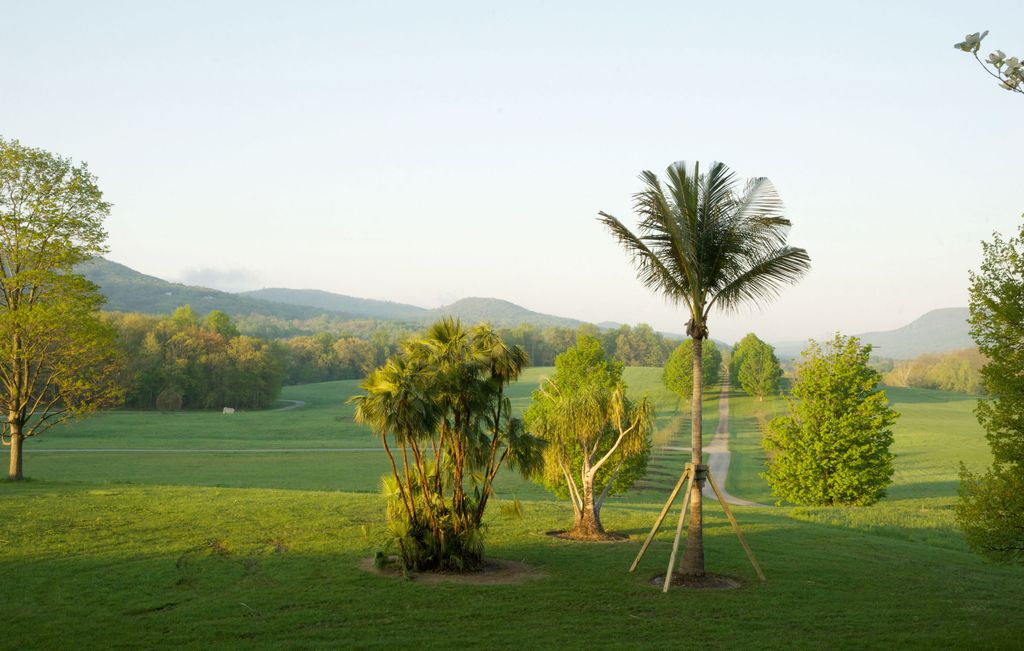
The 500-acre Storm King Art Center is about an hour north of New York in the Hudson River Valley, in the shadow of Storm King mountain, which was named by the now-forgotten writer and editor Nathaniel Parker Willis, who lived thereabouts in the mid-19th century, and once exalted “The tallest mountain is … looked upon as the most sure foreteller of a storm … He seems the monarch, and this seems his stately ordering of a change in the weather. Should not STORM-KING, then, be his proper title?”
The name stuck, and a century later a hardware mogul opened what has become the celebrated modern art sculpture park. This month the center opened an exhibition titled “Indicators: Artists on Climate Change” featuring works by 17 artists including one artist collective scattered about the landscape, each responding in some way to mankind’s not so stately ordering up of a change in the world’s weather. “We approached artists who had an affinity for the topic,” says Nora Lawrence, senior curator at the center, who notes that “environmental stewardship” is always a big part of the park’s concerns. But it’s also a very pretty setting for the last stand of the anthropocene, and well worth a summer weekend to bask in nature’s remaining glory.
Four artists explain their works:
Justin Brice Guariglia
“The ecological crisis we face today affects everyone around the globe, there is simply no escaping it, and yet there is this major paradox of belief … we all know very well what’s happening, but … we don’t really want to believe it, and so we mostly choose to simply ignore it. We Are The Asteroid (above; video of it here) does not overwhelm the viewer with scientific facts and figures, but simply provides a new perspective and vocabulary to think ecologically.”

Jenny Kendler
“Birds Watching emerged from my desire to represent in Indicators the non-human animals whose unique life-ways are threatened by anthropogenic climate change. I used the eyes of birds — who are such an important part of the Hudson Valley ecosystem — because the ‘mutual gaze’ of looking into the eyes of another involves us in an active participation with the world, reminding us that we cannot be solely spectators in this age when human care itself has become an ecological force.”

Mary Mattingly
“Along the Lines of Displacement uses the language of a folly to organize something that’s out of place in an environment where it’s unexpected — people might be able to go to Storm King and harvest fruit from a palm tree during this exhibition. The sculpture blends with its surroundings enough to be uncanny, in the landscape known for being an idealized, human created terrain.
“It’s also reflecting on a conversation about migration and managed natural areas. Managing natural areas from being overtaken by invasive plants, is about building plant diversity. This work can and does slow down effects of climate change, but it is what’s considered a “Band-Aid approach”, as it does and cannot effectively change the workings of a dominant, industrialized system based on specialization rather than holism, so it does attempt to do only what it can directly control. Plants that are brought to or that migrate to a place and begin to engulf an area are considered invasive. There is a dialogue about how this parallels human movements: from those who move with some modicum of choice to climate refugees who are forced to relocate, the concern arises: who or what entities are controlling their movements, and is that control ethical, or in some cases, is that movement ethical? While solutions to these topics are complicated, nuanced, and never universal, this piece takes the position of living with, and maybe even (one of my recent favorite quotes by Robin Messing) holding, not having.”

Hara Woltz
“Much of my work explores ecological phenomena and human perception, links between behavioral choices and environmental degradation across a range of temporal and spatial scales. I’m curious about what information we choose to embrace, avoid or ignore.
Though it has been evident for years that human actions are seriously altering global climate patterns, many of us have chosen to turn away from sound scientific data. Responding to that, I’ve created an interactive weather station that gathers people around the collection of climate data, and engages them physically with the surface materials and surrounding environment through a bodily experience of different temperatures. The form of the work emerged from four primary desires; to turn people towards rather than away from scientific data, to connect a local experience to a perceived distant phenomenon, to reflect on the arctic amplification effect and predictions of sea ice melt, and to acknowledge the layers of melting history held in cores of ice. Through this work you can engage with interconnected climate phenomena across time and distance, or you may simply sit in a particular microclimate at Storm King, experiencing the work and the landscape and whatever the internal or external weather of the moment might be.
The specific location in a northwest meadow allows the climate instruments to function optimally. And, it’s a splendid place to lean back and look at the sky or listen to the wind blow through the meadow grasses.”
